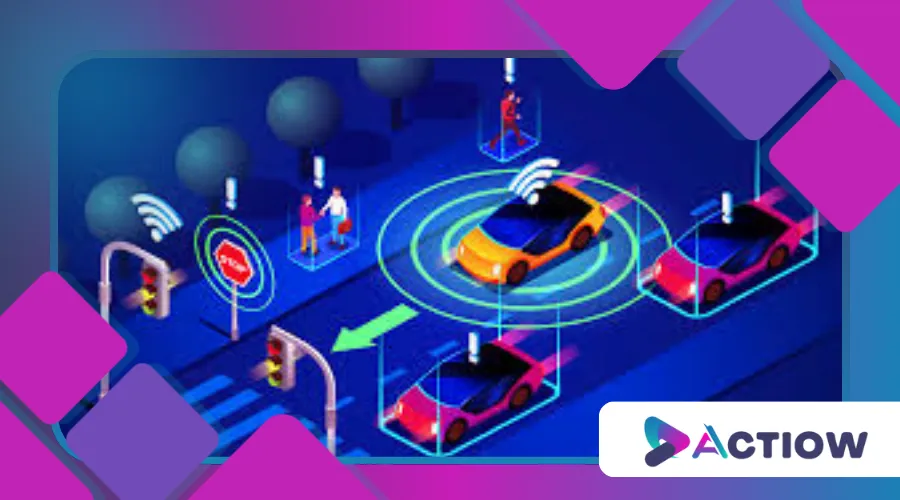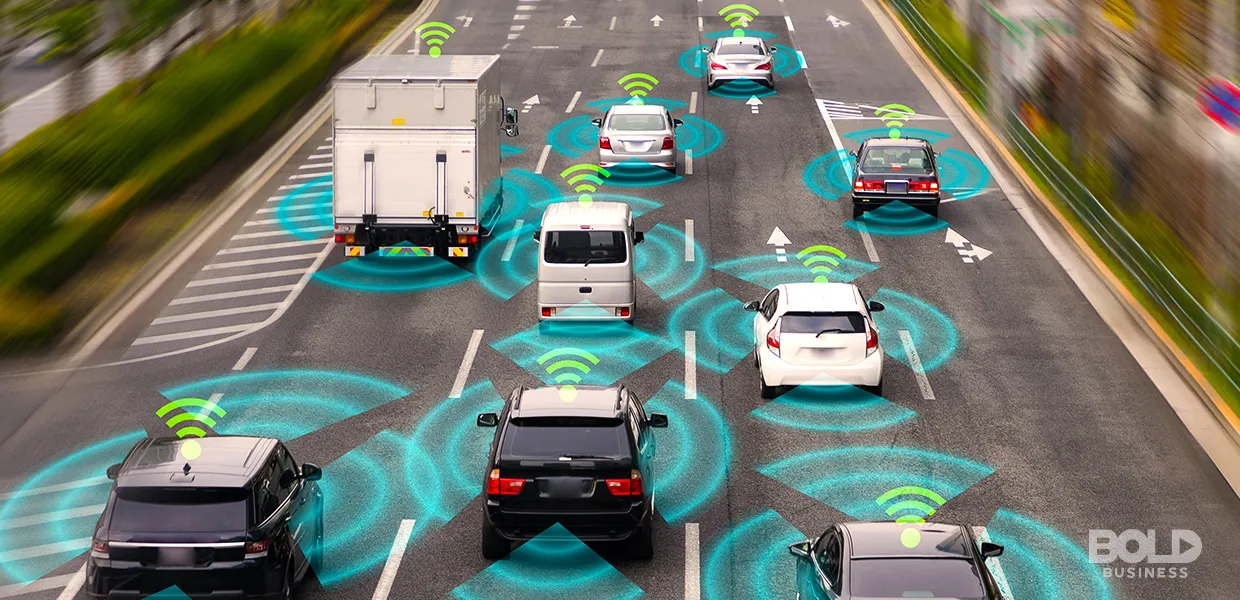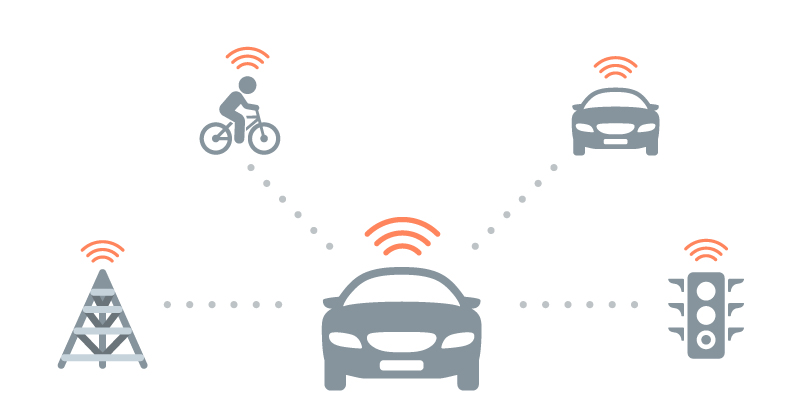V2X Technology: How Cars Communicate with Their Environment

Anúncios
The automotive world is undergoing a silent revolution, and at its core is V2X technology—a groundbreaking system that enables vehicles to “talk” to their surroundings.
From traffic lights to pedestrians, this innovation is reshaping how we think about mobility, safety, and efficiency.
But what exactly is V2X, and why is it considered the backbone of future transportation?
Anúncios
Let’s dive into the mechanics, benefits, and challenges of this transformative technology.
As urban areas grow and traffic congestion worsens, V2X technology offers a promising solution to these pressing issues.
By fostering communication between vehicles and infrastructure, we can create smarter cities that prioritize safety and efficiency for all road users.
What Is V2X Technology?
V2X technology, or “Vehicle-to-Everything,” is a communication framework that allows cars to exchange data with virtually any entity in their environment.
This includes other vehicles (V2V), infrastructure (V2I), pedestrians (V2P), and networks (V2N).
By leveraging advanced sensors, cameras, and wireless networks, V2X creates a seamless flow of information, enabling real-time decision-making that enhances safety and reduces congestion.
For instance, imagine a scenario where your car receives a signal from a traffic light indicating it’s about to turn red.
Instead of slamming the brakes, your vehicle adjusts its speed smoothly, saving fuel and reducing wear on the brakes.
This is just one example of how V2X technology is making roads smarter and safer.
Moreover, V2X can also provide information about road conditions, such as icy patches or construction zones, allowing drivers to make informed decisions on the fly.
This proactive approach to driving not only enhances safety but also contributes to a more efficient transportation system overall.
The Building Blocks of V2X
At its core, V2X relies on two primary communication technologies: Dedicated Short-Range Communications (DSRC) and Cellular-V2X (C-V2X).
| Technology | Description | Advantages |
|---|---|---|
| DSRC | Uses Wi-Fi-like signals for short-range communication | Low latency, proven reliability |
| C-V2X | Leverages cellular networks for broader connectivity | Scalability, compatibility with 5G |
While DSRC has been the traditional choice, C-V2X is gaining traction due to its ability to integrate with 5G networks, offering faster speeds and greater range.
This shift is critical as the automotive industry moves toward autonomous driving, where split-second decisions can mean the difference between safety and disaster.
The transition from DSRC to C-V2X also opens up possibilities for new applications, such as vehicle platooning and enhanced traffic management systems.
As these technologies evolve, we can expect to see more innovative solutions that improve the overall driving experience and safety.
+ Electric Cars 2025: Discover the Models That Will Dominate the Roads

Why V2X Matters: Safety and Efficiency
One of the most compelling arguments for V2X technology is its potential to save lives.
According to the National Highway Traffic Safety Administration (NHTSA), V2X could prevent or mitigate up to 80% of non-impaired crashes.
By providing drivers with real-time alerts about hazards, such as an approaching ambulance or a pedestrian crossing the street, V2X acts as an extra set of eyes on the road.
But safety is just the tip of the iceberg.
V2X also promises to reduce traffic congestion, a growing problem in urban areas.
By communicating with traffic management systems, vehicles can optimize their routes, avoid bottlenecks, and even coordinate with each other to maintain smooth traffic flow.
In addition to enhancing safety and efficiency, V2X technology can also contribute to environmental sustainability by reducing fuel consumption and emissions.
As vehicles communicate and adjust their speeds, they can minimize stop-and-go traffic, leading to a more eco-friendly driving experience.
The Road to Autonomy: V2X as a Catalyst
As we inch closer to a future dominated by self-driving cars, V2X technology is emerging as a critical enabler.
Autonomous vehicles rely heavily on data to navigate their surroundings, and V2X provides an additional layer of information that complements onboard sensors like LiDAR and radar.
For example, a self-driving car equipped with V2X can receive data from a traffic light that’s obscured by a large truck.
This information allows the vehicle to make informed decisions, even in challenging conditions.
Without V2X, autonomous systems would be far more limited in their capabilities.
Additionally, V2X can enhance the overall effectiveness of autonomous vehicles by allowing them to communicate with one another, creating a network of connected cars that can share vital information.
This interconnectedness can lead to improved traffic flow and reduced accident rates, making the roads safer for everyone.

Challenges and Roadblocks
Despite its promise, V2X technology faces several hurdles.
One major challenge is the lack of standardized infrastructure.
For V2X to work effectively, cities need to invest in smart traffic lights, sensors, and communication networks—a costly endeavor that requires significant coordination between governments and private companies.
Another issue is cybersecurity.
With vehicles constantly exchanging data, the risk of hacking increases.
Ensuring that V2X systems are secure from malicious attacks is paramount to gaining public trust and widespread adoption.
Moreover, public perception and understanding of V2X technology play a crucial role in its acceptance.
Educating consumers about the benefits and safety measures associated with V2X can help alleviate concerns and promote a smoother transition to this new technology.
++ Self-Driving Cars: Has the Future of Mobility Arrived?
The Future of V2X: What Lies Ahead
The potential of V2X technology is immense, but its success hinges on collaboration.
Automakers, tech companies, and governments must work together to create a unified ecosystem that supports seamless communication.
One promising development is the integration of V2X with 5G networks.
With its ultra-low latency and high bandwidth, 5G could supercharge V2X, enabling new applications like remote vehicle control and enhanced augmented reality displays for drivers.
This integration will not only enhance the functionality of V2X but also pave the way for innovative services that can further improve the driving experience.
As the automotive landscape evolves, we can expect to see a growing number of partnerships aimed at maximizing the potential of V2X technology.
V2X in Action: Real-World Applications
Several automakers are already incorporating V2X technology into their vehicles.
For instance, General Motors has equipped select Cadillac models with V2V capabilities, allowing them to share data about speed, direction, and road conditions.
Similarly, Audi has partnered with cities like Las Vegas to test V2I systems that communicate with traffic lights.
| Automaker | V2X Application | Impact |
|---|---|---|
| General Motors | Vehicle-to-Vehicle (V2V) | Enhances collision avoidance |
| Audi | Vehicle-to-Infrastructure (V2I) | Reduces traffic congestion |
| Tesla | Vehicle-to-Network (V2N) | Improves over-the-air updates |
These examples highlight the versatility of V2X and its potential to transform the driving experience.
Furthermore, as more automakers adopt V2X technology, we can anticipate a future where vehicles seamlessly interact with their environment, leading to safer and more efficient roads.
For more insights into V2X technology and its impact on the automotive industry, visit V2X Insights.
Conclusion: A Connected Future
V2X technology is more than just a buzzword—it’s a paradigm shift in how we interact with our vehicles and the world around us.
By enabling cars to communicate with their environment, V2X is paving the way for safer, smarter, and more efficient transportation.
However, realizing this vision requires overcoming significant challenges, from infrastructure gaps to cybersecurity concerns.
As the automotive industry continues to innovate, one thing is clear: the future of mobility is connected, and V2X is at the heart of this transformation.
So, the next time you’re stuck in traffic or navigating a busy intersection, remember that V2X technology is working behind the scenes to make your journey safer and smoother.
The road ahead is full of possibilities, and with V2X, we’re driving toward a brighter, more connected future.
This article not only highlights the technical aspects of V2X but also explores its real-world implications, challenges, and future potential.
By balancing technical details with engaging storytelling, it provides a comprehensive overview that appeals to both tech enthusiasts and everyday drivers.
